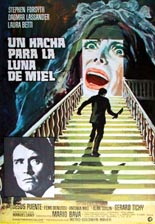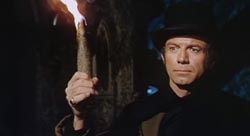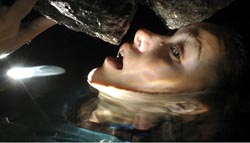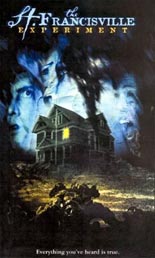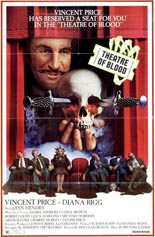
 On its surface, it may be easy to confuse Theatre of Blood for just another early ’70s British horror movie; a natural follow-up to star Vincent Price’s pair of Dr. Phibes films, in which an aggrieved maniac wreaks revenge on a group of people in a very specific and entertaining manner. But then as you watch, it quickly becomes clear that Theater plays by its own bizarre rules, making it an utterly unique, darkly comic horror classic.
On its surface, it may be easy to confuse Theatre of Blood for just another early ’70s British horror movie; a natural follow-up to star Vincent Price’s pair of Dr. Phibes films, in which an aggrieved maniac wreaks revenge on a group of people in a very specific and entertaining manner. But then as you watch, it quickly becomes clear that Theater plays by its own bizarre rules, making it an utterly unique, darkly comic horror classic.
Price stars as Edward Lionheart, a campy Shakespearian actor whose entire career has been ridiculed in print by London’s elitist circle of theatrical critics. When they deny him the annual acting trophy he’s convinced he deserves, he appears to commit suicide in front of them. But when they all start dying in murderous scenarios inspired by the plays of Lionheart’s beloved Bard, it’s clear that he’s not quite as deceased as he originally appeared.
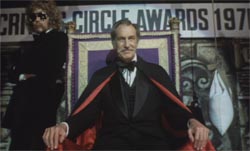 You first know something is a bit off here when Diana Rigg (five years after TV’s The Avengers and looking amazing), playing Lionheart’s daughter, Edwina, first shows up in drag, complete with beard and enormous blond afro. Then there’s the film’s complete lack of a protagonist. Unable to bring themselves to make a critic a sympathetic hero, director Douglas Hickox and screenwriter Anthony Grenville-Bell instead allow Ian Hendry’s arrogant Peregrine Devlin to finally defeat Lionheart, but in such a way that makes the murderer seem more like a tragic hero than despicable villain.
You first know something is a bit off here when Diana Rigg (five years after TV’s The Avengers and looking amazing), playing Lionheart’s daughter, Edwina, first shows up in drag, complete with beard and enormous blond afro. Then there’s the film’s complete lack of a protagonist. Unable to bring themselves to make a critic a sympathetic hero, director Douglas Hickox and screenwriter Anthony Grenville-Bell instead allow Ian Hendry’s arrogant Peregrine Devlin to finally defeat Lionheart, but in such a way that makes the murderer seem more like a tragic hero than despicable villain.
But the real reason to watch Theatre of Blood is the opportunity to see Price sink his teeth into some of the best speeches Shakespeare ever wrote. Despite being given the excuse of playing an untalented “ham” actor, his performance leaves you wishing he had the opportunity to play those same roles in real life. Ultimately, this makes his character far more sympathetic than the assholes he slaughters throughout. —Allan Mott

